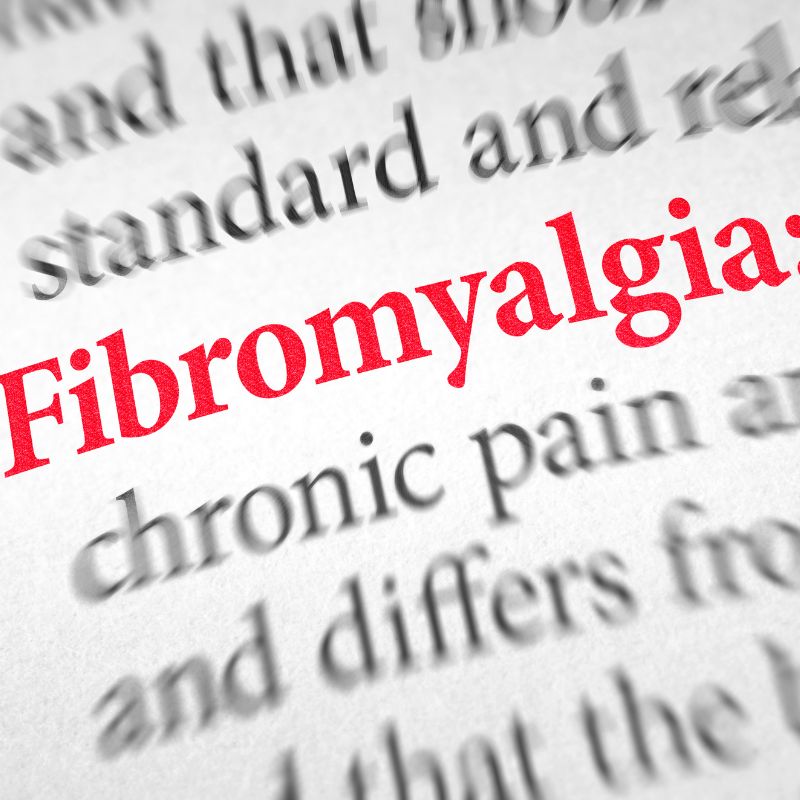Fibromyalgia is a chronic condition characterised by widespread musculoskeletal pain, fatigue and tenderness in specified areas. Its causes remain elusive and its management often requires a multi-faceted approach, complicating the lives of those affected by it. In recent years, infrared sauna blankets have emerged as a complementary treatment, providing a private and convenient option to traditional saunas.
Infrared sauna blankets utilise the same technology as infrared saunas but in a more accessible form. They produce infrared heat which penetrates the body, potentially leading to various health benefits. For individuals with fibromyalgia, these blankets may offer a practical method to alleviate symptoms. The heat generated by the blankets is said to improve circulation, aid in muscle relaxation and reduce pain, as well as having a comforting effect that could promote better sleep and overall improved quality of life.
Key Takeaways
- Infrared sauna blankets may offer symptom relief for fibromyalgia sufferers.
- These blankets generate heat that can improve circulation and reduce pain.
- They provide a private, accessible alternative to traditional infrared saunas.
Understanding Fibromyalgia
Fibromyalgia is a long-standing and complex condition characterised by chronic widespread pain and a host of other symptoms. This section will delve into the symptoms that patients experience as well as the potential causes and risk factors linked to the disorder.
Symptoms and Diagnosis
Fibromyalgia presents with a constellation of symptoms, the hallmark being chronic widespread pain that persists across various parts of the body. The diagnosis is predominantly clinical, relying on patient history and identification of tender points during physical examination. Patients often report a range of other symptoms including:
- Widespread Pain: This is felt throughout the body and is often described as a dull, constant ache.
- Tender Points: Certain points on the body become tender to the touch.
- Fatigue: Individuals often experience profound tiredness that is not relieved by sleep.
- Sleep Disturbances: Poor quality sleep or conditions like sleep apnoea can be associated with fibromyalgia.
- Cognitive Difficulties: Commonly referred to as "fibro fog," this refers to problems with concentration, memory, and mental clarity.
Other common experiences associated with fibromyalgia can include:
- Muscular spasms and joint stiffness
- Digestive problems, inclusive of irritable bowel syndrome (IBS)
- Migraines and chronic headaches
- Psychological symptoms such as anxiety and depression
- Coexisting conditions like chronic fatigue syndrome and rheumatoid arthritis
Causes and Risk Factors
The exact causes of fibromyalgia remain unclear, but there are multiple factors thought to be associated with its development. These factors can include:
- Genetic Predisposition: There is evidence suggesting that fibromyalgia can run in families, indicating a possible genetic component.
- Trauma: Both physical and psychological traumas are considered potential triggers for the onset of fibromyalgia symptoms.
- Psychological Stress: Ongoing stress can exacerbate symptoms or could even be a precipitating factor.
- Autoimmune Disease Symptoms: While fibromyalgia itself is not classified as an autoimmune disease, its symptoms can be similar to those of autoimmune disorders.
Risk factors for developing fibromyalgia can include:
- Gender: Females are more likely to develop fibromyalgia than males.
- Age: Though it can affect individuals at any age, it is most commonly diagnosed in middle age.
- Co-Occurring Conditions: People with certain diseases, such as rheumatoid arthritis or lupus, may be at higher risk of developing fibromyalgia.
Introduction to Infrared Saunas

Infrared saunas are increasing in popularity as a form of heat therapy, offering benefits such as muscle relaxation and improved circulation. They differ significantly from traditional saunas in both their method of heat delivery and the range of temperatures at which they operate.
Infrared Sauna Vs. Traditional Sauna
Infrared saunas and traditional saunas operate on different principles. Traditional saunas generate heat by warming the air around the individual, usually through steam or dry heat, which in turn heats the body. Typically, these saunas operate at higher temperatures, often between 65–90°C. In contrast, infrared saunas utilise electromagnetic radiation to directly warm the body without significantly increasing the air temperature. This allows them to function at lower temperatures, usually 49–60°C, making them more tolerable for some individuals.
Principles of Infrared Sauna Therapy
Infrared sauna therapy involves the use of infrared heaters to emit far infrared radiation, which penetrates human tissue, directly warming the body and inducing a deep sweat at lower temperatures than traditional saunas. This thermal therapy is designed to harness the benefits of heat in a more focused way. Infrared therapy, especially within the context of infrared saunas, aims to provide therapeutic benefits including enhanced circulation, muscle relaxation, and potential relief from chronic pain conditions such as fibromyalgia.
Benefits of Infrared Sauna Blankets for Fibromyalgia

Infrared sauna blankets may present several potential benefits for individuals suffering from fibromyalgia, specifically by addressing chronic pain and improving overall well-being.
Pain Management
Patients with fibromyalgia often experience widespread pain, a hallmark symptom that can be debilitating. The use of infrared sauna blankets can lead to pain relief by gently elevating the body's surface temperature and potentially reducing muscle tension. This form of heat therapy, over time, may diminish the perception of pain.
Enhanced Circulation and Detoxification
Increased circulation is another benefit of infrared sauna blankets. The warmth generated may enhance blood flow, which in turn can aid in the detoxification process by helping to eliminate toxins through sweat. Improved circulation and detoxification can contribute to a reduction in symptoms and promote healing in those affected by fibromyalgia.
Stress and Mood Improvement
Stress relief is essential for improving the quality of life in fibromyalgia patients. Infrared sauna blankets encourage relaxation, helping to lower stress levels which may indirectly alleviate physical symptoms. Moreover, the soothing heat can improve one's mood by invoking a sense of calm and relaxation.
Sleep Quality
Improving sleep quality is a significant benefit, as fibromyalgia often disrupts deep sleep patterns. The use of infrared sauna blankets may promote relaxation and ease of falling asleep, potentially leading to more restorative deep sleep which is crucial for the body's recovery processes.
Mechanisms of Infrared Therapy
Infrared sauna blankets may offer therapeutic benefits for individuals with Fibromyalgia by interacting with the body's nervous system and inflammatory responses. These mechanisms underpin the potential relief from chronic pain and other symptoms associated with Fibromyalgia.
Effects on the Nervous System
Infrared therapy has been observed to affect the nervous system. It primarily influences the central nervous system which regulates pain perception. By directing infrared heat deep into the body's tissues, it can lead to a release of endorphins, the body's natural pain relievers. This may result in a reduction of pain signals sent through the nervous system, providing a sense of relief from chronic pain and headaches that are often experienced by Fibromyalgia sufferers.
Heat Shock Proteins and Inflammation
The application of heat via an infrared sauna blanket initiates the production of heat shock proteins. These proteins play a role in reducing inflammation at a cellular level, thereby potentially reducing the widespread inflammation associated with Fibromyalgia. Additionally, the deep penetration of infrared heat can enhance circulation, leading to an improved immune system response and further aiding in the reduction of inflammation throughout the body.
Safety and Effectiveness of Infrared Sauna Blankets
Infrared sauna blankets are emerging as a supportive treatment for fibromyalgia, claiming to offer relief by utilising heat therapy. This section explores their clinical backing and how they measure up against other fibromyalgia treatments.
Clinical Research and Studies
Clinical research on infrared sauna blankets is growing, although it is still in the nascent stage. Some studies suggest that the heat generated by these blankets may help improve symptoms of fibromyalgia, a condition characterised by widespread pain. Research indicates that sauna sessions might lead to temporary relief in muscle pain and stiffness, increasing blood flow and reducing inflammation. It is also important to note the safety aspects of their use, especially for individuals who are sensitive to temperature changes or have conditions that might be exacerbated by heat therapy. Safety considerations typically include monitoring for overheating and dehydration.
Comparison with Other Treatments
When compared to other treatments, infrared sauna blankets offer a non-pharmacological alternative that might complement existing therapeutic strategies, such as medication and physical therapy. While antidepressants and pain relievers are commonly prescribed for fibromyalgia, sauna blankets provide a drug-free option to manage discomfort. Treatments like acupuncture and underwater exercise also serve as alternatives, with both modalities reporting positive effects on pain and mobility. However, unlike exercise, which can raise heart rate and blood pressure, sauna blankets induce relaxation and warmth without exerting the cardiovascular system. The efficacy of infrared blankets compared to antidepressants depends on individual responses and should be discussed with a healthcare provider for a tailored treatment plan.
Using Infrared Sauna Blankets at Home
Infrared sauna blankets offer a convenient option for those seeking the benefits of infrared heat therapy in the comfort of their own home. They are designed for ease of use and can provide a relaxing experience for individuals with fibromyalgia.
Guidelines and Precautions
When using an infrared sauna blanket at home, safety is of utmost priority. Individuals should start with lower temperatures, gradually increasing to find a comfortable range, typically between 40°C and 60°C. It is crucial to stay hydrated before, during, and after using the sauna blanket. Users must follow the manufacturer's specific instructions to avoid the risks of burns or dehydration.
One must also consider the materials of the sauna blanket, ensuring they are non-toxic and suitable for long-term use. It's advisable to use the blanket in a well-ventilated area to prevent discomfort from the heat it emits.
Key Precautions:
- Stay hydrated
- Begin with lower temperatures
- Follow manufacturers' guidelines
- Ensure proper ventilation
- Use non-toxic materials
Maintenance and Cleaning
To maintain an infrared sauna blanket, regular cleaning is essential to ensure hygiene and durability. Since the blanket comes in direct contact with the skin, residues such as sweat and oils can accumulate. Most blankets are designed to be easy to clean, with some models having water-resistant and wipeable materials.
After each use, it's recommended to wipe the sauna blanket with a damp cloth and a mild detergent, then dry it thoroughly before storing. This not only preserves the material but also helps to maintain a more hygienic environment for the next use.
Cleaning Procedure:
- Turn off and unplug the blanket.
- Let it cool down.
- Clean with a damp cloth and mild detergent.
- Dry completely before folding.
Proper care ensures the infrared sauna blanket remains a valuable tool for those managing fibromyalgia symptoms at home.
Lifestyle and Management of Fibromyalgia
Fibromyalgia, as a chronic condition, requires ongoing management strategies tailored to the individual's symptoms and lifestyle. Effectively managing this condition involves a multi-faceted approach consisting of exercise, diet, and other therapeutic interventions.
Exercise and Physical Activity
Regular physical activity is essential for individuals with fibromyalgia. It helps to reduce pain, improve sleep, and alleviate psychological stress. Tailored exercise programs should be gentle and increased gradually to avoid overwhelming the body. Examples include:
- Low-impact aerobic exercise: such as swimming or cycling, which minimise stress on the joints.
- Strength training: utilising light weights to build muscle without straining the body.
- Flexibility exercises: like yoga or Pilates, can enhance range of motion and reduce stiffness.
Diet and Nutrition
Nutrition plays a significant role in the management of fibromyalgia. A well-balanced diet can help manage weight, reduce inflammation, and maintain overall health. Considerations include:
- Anti-inflammatory foods: such as omega-3 rich fish, leafy greens, and nuts.
- Fibre-rich foods: aiding digestion and potentially reducing the tiredness associated with fibromyalgia.
- Hydration: keeping well-hydrated to assist with bodily functions and possibly alleviate symptoms.
Other Therapies and Interventions
In addition to lifestyle changes, other therapies can prove beneficial:
- Therapy for psychological stress: including cognitive-behavioural therapy (CBT) to manage the impact of chronic pain.
- Sleep management techniques: to improve the quality of sleep disrupted by fibromyalgia.
- Infrared sauna therapy: which may help reduce pain and increase circulation, offering relief from the symptoms of this condition.
Frequently Asked Questions
In this section, we explore common inquiries about using infrared sauna blankets for fibromyalgia symptom management, focusing on benefits, pain reduction, inflammation, product features, and usage recommendations.
What are the potential benefits of infrared sauna blankets for managing fibromyalgia symptoms?
Infrared sauna blankets may provide a range of benefits for those managing fibromyalgia. They are believed to alleviate chronic pain, enhance sleep quality, and improve overall wellbeing through the deep penetration of infrared heat.
Can regular use of infrared sauna blankets reduce chronic pain associated with fibromyalgia?
Regular sessions with an infrared sauna blanket might contribute to a significant reduction in chronic pain for fibromyalgia patients by increasing circulation and relaxing muscles.
How does the heat from an infrared sauna blanket affect fibromyalgia-related inflammation?
The heat generated by infrared sauna blankets may assist in reducing inflammation by improving blood flow to affected tissues, thereby potentially easing fibromyalgia-related discomfort.
Are there specific features to look for when choosing an infrared sauna blanket for fibromyalgia relief?
When selecting an infrared sauna blanket for fibromyalgia relief, individuals should consider features such as adjustable temperature settings, the quality of materials, and the distribution of infrared elements to ensure effective and comfortable use.
What is the recommended duration and frequency of infrared sauna blanket sessions for fibromyalgia patients?
For optimal results, fibromyalgia patients are generally advised to start with shorter sessions in the infrared sauna blanket, gradually increasing to daily or several times a week as tolerated, each session lasting up to 30 minutes.
How do infrared sauna blankets compare to traditional steam rooms in the context of fibromyalgia treatment?
Infrared sauna blankets are often preferred for fibromyalgia treatment due to their directed heat delivery, ease of use in a home setting, and ability to operate at lower temperatures than conventional steam rooms, which is beneficial for those sensitive to high heat.



